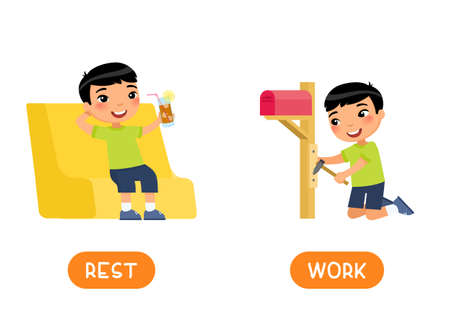Understanding Feng Shui and Its Relevance for Kids’ Spaces
Feng shui is an ancient Chinese practice focused on creating balance and harmony in living environments. While it might sound mystical, the core idea is simple: arrange spaces in a way that promotes positive energy, comfort, and well-being. In recent years, more American families are exploring feng shui to support their children’s health and happiness, especially when it comes to bedrooms.
What Is Feng Shui?
At its heart, feng shui is about the flow of energy—known as “chi”—through a space. By thoughtfully placing furniture, choosing colors, and managing clutter, you can help create a room that feels peaceful and nurturing. While it has roots in Eastern traditions, the principles of feng shui can easily be adapted to suit modern American homes and lifestyles.
Why Feng Shui Matters for Children’s Bedrooms
Children spend a lot of time in their bedrooms—not just sleeping, but also playing, reading, and sometimes studying. The right environment can make a big difference in how well they sleep and how healthy they feel. Feng shui offers practical guidelines that help parents create rooms where kids feel safe, relaxed, and supported.
Feng Shui Basics for Kids’ Rooms
| Feng Shui Principle | How It Helps Your Child | Modern Application |
|---|---|---|
| Clear the Clutter | Reduces stress and helps focus | Use storage bins or shelves for toys/books |
| Good Bed Placement | Promotes restful sleep and security | Avoid placing bed directly under a window or facing the door head-on |
| Natural Light & Air | Boosts mood and overall health | Open windows regularly; use light curtains |
| Soothing Colors | Encourages calmness and relaxation | Pale blues, soft greens, or gentle earth tones work well |
| Personal Touches | Makes the space feel welcoming and personal | Add favorite artwork or family photos (but avoid too many distractions) |
Blending Feng Shui with American Lifestyles
You don’t need to follow every traditional rule to benefit from feng shui. Instead, think of these principles as a flexible guide. For example, instead of ornate feng shui cures like crystals or bamboo flutes, you can use objects your child loves that also fit within the guidelines above. The goal is to make your child’s room both functional and nurturing—something any parent can appreciate.
2. Optimizing Bed Placement for Restful Nights
When it comes to creating a healthy and soothing sleep environment for your child, bed placement is one of the most important feng shui principles you can use. Where your child’s bed sits in their room doesn’t just affect how the space looks—it also influences their sense of safety, comfort, and sleep quality.
Why Bed Placement Matters
According to feng shui, the position of the bed determines how energy (also called “chi”) flows around your child while they rest. The right placement helps them feel secure, reduces anxiety, and encourages deeper, more restful sleep. In American homes, where bedrooms come in all shapes and sizes, these guidelines are easy to adapt for any style or layout.
The Command Position
Feng shui recommends placing the bed in what’s called the “command position.” This means your child should be able to see the main door while lying in bed—but not be directly in line with it. The headboard should be against a solid wall for extra support, but avoid placing the bed under a window or sharing a wall with a bathroom if possible.
| Do | Dont |
|---|---|
| Place headboard against a solid wall | Put bed directly under a window |
| Make sure child can see the bedroom door from bed | Line up bed with the door (“coffin position”) |
| Keep some open space on both sides of the bed if possible | Push one side of the bed against the wall (unless space is tight) |
| Avoid sharing a wall with a bathroom or kitchen appliances | Place bed under overhead shelves or beams |
Simple Tips for Every Room Size
- Small rooms: If space is limited, do your best to keep at least one side of the bed open and choose the strongest wall for the headboard.
- Bunk beds: Make sure they are sturdy and not placed under heavy ceiling fixtures. Avoid positioning bunks so that feet face directly out the door.
- Twin beds: For siblings sharing a room, try an L-shaped arrangement so each child has some personal space and isn’t directly facing each other while sleeping.
Extra Comfort Touches
Add soft bedding, cozy pillows, and calming colors around your child’s bed to boost feelings of security and relaxation. Nightlights or gentle lamps near but not over the bed help create a soothing bedtime routine without disturbing sleep.

3. Choosing Soothing Colors and Décor for Harmony
When it comes to transforming your child’s room with feng shui, picking the right colors and décor is key to creating a peaceful atmosphere. In American homes, it’s common to find bold colors or themed decorations in kids’ rooms, but feng shui encourages a softer touch for better sleep and well-being.
Best Feng Shui Colors for Kids’ Rooms
Feng shui highlights the importance of color energy. Soft, muted shades are often best for promoting calm and relaxation. Here’s a simple guide to soothing colors inspired by feng shui principles:
| Color | Feng Shui Effect | American Home Style Example |
|---|---|---|
| Light Blue | Calms the mind, supports restful sleep | Nautical or sky-themed bedding, wall paint |
| Sage Green | Brings balance and connection to nature | Leaf-print curtains, green accent pillows |
| Pale Pink or Peach | Creates a nurturing, gentle environment | Blush throw blankets, soft area rugs |
| Cream or Off-White | Adds warmth and openness without overstimulation | Neutral walls, ivory furniture pieces |
| Lavender | Encourages tranquility and reduces stress | Purple-toned wall decals, floral artwork |
Wall Art and Decorative Items That Promote Calmness
The images and objects your child sees every day can influence their mood and energy levels. In feng shui, it’s important to select décor that feels positive and comforting rather than overstimulating or aggressive.
Feng Shui-Inspired Décor Tips for American Family Homes:
- Avoid Loud or Violent Imagery: Choose art with peaceful scenes like landscapes, animals, or abstract designs in calming tones.
- Simplify Wall Art: One or two larger pieces are better than lots of small ones. This helps prevent visual clutter.
- Add Natural Elements: Decorate with wooden frames, potted plants (like snake plant or pothos), or woven baskets to introduce earth energy for grounding.
- Select Gentle Lighting: Use warm LED bulbs, fairy lights, or lamps with soft shades instead of harsh overhead lights.
- Create a Cozy Reading Nook: Place plush cushions or beanbags near a bookshelf—this encourages quiet time and relaxation.
Avoid Overcrowding the Space
Toys and decorations should be thoughtfully arranged so there’s room to move freely. Open spaces help energy flow easily through the room, which supports both playtime and restful sleep.
4. Decluttering and Organizing for Positive Energy Flow
In Feng Shui, clutter is more than just a mess—it’s believed to block the flow of positive energy (or “chi”) in a room. For American families with busy schedules and energetic kids, toys, clothes, and school supplies can quickly pile up. But did you know that keeping your child’s room organized can actually help them sleep better, focus more easily on homework, and even feel happier? Let’s explore how decluttering supports your child’s health and well-being—and discover some practical tips that really work for everyday family life.
Why Decluttering Matters in Feng Shui
When your child’s space is clear of unnecessary stuff, energy can move freely. This creates a calm and relaxing environment—perfect for rest and recharging after a long day at school or activities. Clutter can make kids feel overwhelmed or distracted, which may impact their sleep patterns and emotional balance.
Simple Decluttering Tips for Busy Families
| Feng Shui Principle | Practical Tip | How It Helps |
|---|---|---|
| Clear Pathways | Keep walkways free from toys, laundry, and bags. | Makes the room feel more open and safe; reduces tripping hazards. |
| Organized Storage | Use bins, baskets, or labeled drawers for toys and art supplies. | Saves time cleaning up and teaches kids responsibility. |
| Bed Placement | Avoid storing things under the bed if possible. | Allows energy to flow smoothly around where your child sleeps. |
| Tidy Surfaces | Limit items on desks and nightstands to essentials only. | Cuts down on distractions during homework or bedtime routines. |
| Regular Purge | Set aside 10 minutes each week to donate or recycle unused items together. | Keeps clutter in check without feeling overwhelming; builds good habits. |
Make Decluttering Fun for Kids
Turn tidying up into a game! Set a timer and see how many toys your child can put away before the bell rings. Or let them decorate their own storage bins with stickers or labels. This not only keeps their space neat but also gives them a sense of pride and ownership over their room.
The Power of Organization for Sleep and Health
A clean and organized bedroom sends a signal to your child’s brain that it’s time to relax. Less visual clutter means fewer distractions at bedtime—and that means better sleep quality. Plus, an orderly space helps kids feel more in control, boosting their confidence and emotional well-being. By weaving Feng Shui principles into daily routines, you’re giving your child the tools they need to thrive—in both mind and body.
5. Incorporating Nature and Personal Touches for Wellness
Bringing elements of nature and your childs unique personality into their room is a key part of feng shui—and it’s also a fun way to boost both health and happiness. Let’s look at how adding plants, natural materials, and personalized items can make your child’s space cozier, healthier, and more supportive of good sleep.
Adding Plants for Fresh Energy
Live plants do more than just look nice—they help purify the air, bring life to the room, and connect your child with nature. Choose safe, easy-care varieties like spider plants, Boston ferns, or snake plants. Avoid thorny or spiky plants, as they can create restless energy according to feng shui principles.
| Plant | Benefits | Feng Shui Tips |
|---|---|---|
| Spider Plant | Air-purifying, non-toxic to kids and pets | Place on a shelf for gentle growth energy |
| Boston Fern | Adds humidity, improves air quality | Hang in corners to soften sharp angles |
| Snake Plant | Tough, filters toxins from the air | Keep away from sleeping area; best near door or window |
Choosing Natural Materials for Comfort
Feng shui encourages using natural materials like wood, cotton, wool, or bamboo. These materials help create a warm and inviting environment where your child can relax and feel secure. Here are some ideas:
- Bedding: Choose organic cotton sheets or blankets for softness and breathability.
- Furniture: Opt for wooden beds or desks instead of metal or plastic when possible.
- Rugs: Use wool or cotton rugs to add comfort underfoot and reduce noise.
Personalizing the Space with Meaningful Items
Your child’s room should reflect who they are! Personal touches not only make the space special but also support positive feelings—an important aspect of feng shui. Let your child choose artwork that makes them happy, display favorite books on shelves, or add family photos in wooden frames. Just be sure not to overcrowd the room; too much clutter can block good energy.
Ideas for Personalized Touches:
- A bulletin board for artwork or achievements
- Pillows in their favorite colors (soft shades are best for sleep)
- A nightlight shaped like an animal or star they love
- Shelves for displaying special collections (with regular tidying)
A Balanced Room Fosters Wellness
By bringing nature indoors and adding personal elements that reflect your child’s interests and personality, you’re supporting both their physical wellness and emotional happiness—the heart of feng shui values. Try these simple changes and watch your child’s room become a place where they truly thrive!


